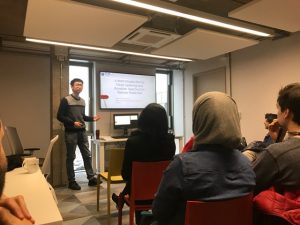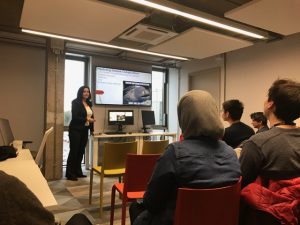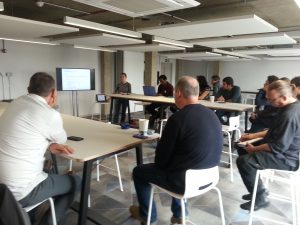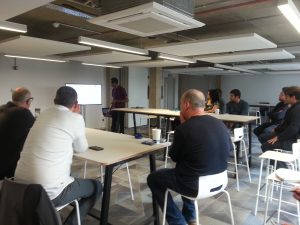
The IDA Opening the Black Box seminar was held from Professor John Holmes titled ‘Explainable AI for the (Not-Always Expert) Clinical Researcher’. It was held at WLFB 207/208 (2nd floor of Wilfred Brown) at 3:00PM. Slides can be found here.
John H. Holmes, PhD, is Professor of Medical Informatics in Epidemiology at the University of Pennsylvania Perelman School of Medicine. He is the Associate Director of the Institute for Biomedical Informatics, Director of the Master’s Program in Biomedical Informatics, and Chair of the Doctoral Program in Epidemiology, all at Penn. Dr. Holmes has been recognized nationally and internationally for his work on developing and applying new approaches to mining epidemiologic surveillance data, as well as his efforts at furthering educational initiatives in clinical research. Dr. Holmes’ research interests are focused on the intersection of medical informatics and clinical research, specifically evolutionary computation and machine learning approaches to knowledge discovery in clinical databases, deep electronic phenotyping, interoperable information systems infrastructures for epidemiologic surveillance, and their application to a broad array of clinical domains, including cardiology and pulmonary medicine. He has collaborated as the informatics lead on an Agency for Healthcare Research and Quality-funded project at Harvard Medical School to establish a scalable distributed research network, and he has served as the co-lead of the Governance Core for the SPAN project, a scalable distributed research network; he participates in the FDA Sentinel Initiative. Dr. Holmes has served as the evaluator for the PCORNet Obesity Initiative studies, where he was responsible for developing and implementing the evaluation plan and metrics for the initiative. Dr. Holmes is or has been a principal or co-investigator on projects funded by the National Cancer Institute, the National Library of Medicine, and the Agency for Healthcare Research and Quality, and he was the Penn principal Investigator of the NIH-funded Penn Center of Excellence in Prostate Cancer Disparities. Dr. Holmes is engaged with the Botswana-UPenn Partnership, assisting in building informatics education and clinical research capacity in Botswana. Dr. Holmes is an elected Fellow of the American College of Medical Informatics (ACMI), the American College of Epidemiology (ACE), and the International Academy of Health Sciences Informatics (IAHSI).
Abstract Armed with a well-founded research question, the clinical researcher’s next step is usually to seek out the data that could help answer it, although the researcher can use data to discover a new research question. In both cases, the data will already be available, and so either approach to inquiry can be appropriate and justifiable. However, the next steps- data preparation, analytics, and inference- are often thorny issues that even the most seasoned researcher must address, and sometimes not so easily. Traditional approaches to data preparation, that include such methods as frequency distribution and contingency table analyses to characterize the data are themselves open to considerable investigator bias. In addition, there is considerable tedium resulting from applying these methods- for example, how many contingency tables does it take to identify variable interactions? It is arguable that feature selection and construction are two tasks not to be left only to human interpretation. Yet we don’t see much in the way of novel approaches to “experiencing” data such that new, data-driven insights arise during the data preparation process. The same can be said for analysis, where even state-of-the art statistical methods, informed or driven by pre-formed hypotheses and the results of feature selection processes, sometimes hampers truly novel knowledge discovery. As a result, inferences made from these analyses likewise suffer. However, new approaches to making AI explainable to users, in this case clinical researchers who do not have the time or inclination to develop a deep understanding of how this or that AI algorithm works, are critically important, and their dearth represents a gap that those of us in clinical research informatics need to fill. Yet, the uninitiated shy away from AI for the very lack of explainability. This talk will explore some new methods for making AI explainable, one of which, PennAI, has been developed at the University of Pennsylvania. PennAI will be demonstrated using several sample datasets.




